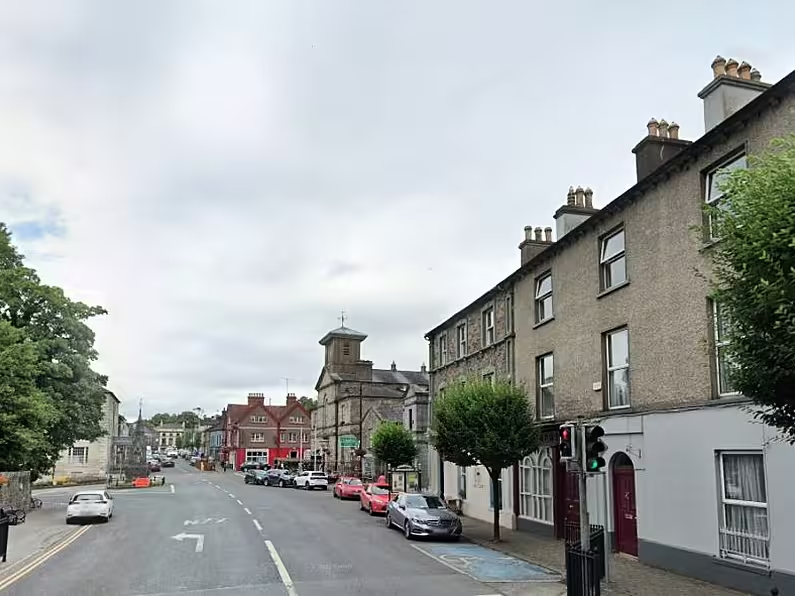Tom Tuite
A 15-year-old boy has been charged with the murder of a mother-of-two who died following a stabbing in Dublin’s IFSC.
Urantsetseg Tserendorj, 48, originally from Mongolia but living in Dublin with her family for a number of years, was rushed to the Mater Hospital following an attack on January 20th last.
The incident happened at 9.30pm near the CHQ building at Custom House Quay as the office cleaner was making her way home from work.
She remained in a critical condition for two weeks before she passed away.
Her husband Ulambayar stayed by her bedside and close family members flew over from Mongolia.
Arrest
The boy, who cannot be named because he is a minor, was arrested and remanded in custody after a brief court appearance on January 23rd.
He was aged 14 at the time of the incident and was originally charged with assault causing harm, attempted robbery and unlawful possession of a knife as a weapon.
However, the case was upgraded to murder when he appeared again at the Dublin Children’s Court today. The assault and knife possession charges were withdrawn on direction of the Director of Public Prosecutions (DPP).
The teen nodded and winked to a family member as he entered the courtroom.
Evidence
Detective Sergeant Brendan Casey gave evidence that he charged the boy at the court at just after 10.30 am today with the offence of murder contrary to common law. The boy replied “nothing” when cautioned and asked if had anything to say.
The murder is alleged to have happened at the walkway between St George’s Dock and Custom House Quay.
Detective Sergeant Casey told District Court president Judge Paul Kelly that the boy also replied “nothing” to an additional charge for production of a knife while committing murder.
He was handed a true copy of the charges, which was then given to his adult sister who accompanied him to the proceedings.
Separate offences
Detective Sergeant Casey said the DPP has directed trial on indictment in the Central Criminal Court on all the new charges, and also the charge of attempted robbery.
The boy sat silently with his arms folded and his head bowed, but he occasionally glanced up, during the hearing. He has not yet indicated how he will plead.
The teen was also charged with other offences on the same date as the murder: a threat to kill or cause serious harm to a man at a shop on O’Connell Street, and production of a knife while attempting robbery and an offence of robbery at Amien Street in Dublin 1.
He replied, “No, nothing to say to you” when Garda Emma Brady charged him with the alleged threat, and he had no reply when Garda Cathy Giblin charged him with the other two offences.
Defence counsel Alison Fynes said the boy would trial on indictment for the murder. However, a “section 75” preliminary hearing needed to be held to decide if the Children’s Court should accept jurisdiction on the other charges.
The boy was remanded in custody pending the preparation of a book of evidence. A bail application can only be made in the High Court in murder cases.
Judge Kelly also ordered disclosure of prosecution evidence to the defence for the preliminary hearing.
The boy will appear again in one week at the Children’s Court.
Children Act
On dates of the boy’s previous hearings, members of the Mongolian community, including Urantsetseg Tserendorj’s husband Ulambayar, gathered outside the courthouse for vigil in Smithfield Square.
However, they remained away from the area today.
It was the boy’s eighth court appearance since he was originally charged. Last month, the Children’s Court was told complicated matters, in particular large amounts of CCTV footage, had delayed obtaining the directions from the DPP. There were approximately 80 exhibits and 210 statements taken, the court had heard.
Section 93 of the Children Act states that no report shall be published or included in a broadcast which reveals the name, address or school of any child concerned in the proceedings or includes any particulars likely to lead to the identification of any child concerned in the proceedings.
In February, the court had heard that social media users were facing a criminal investigation for identifying the teenager. A warning was given by the then presiding judge that breaking the anonymity rule in cases involving juveniles would result in prosecution.












